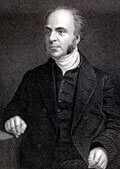Christmas Day
Click here to learn more!
Bible Encyclopedias
Kitto's Popular Cyclopedia of Biblical Literature
Browse by letter: A

John Kitto
Welcome to the 'Kitto's Popular Cyclopedia of Biblical Literature', one of the encyclopedias resources FREELY available on StudyLight.org!
Containing 2,223 entries cross-referenced and cross-linked to other resources on StudyLight.org, this resource can be classified as a required reference book for any good study library.
Dr. John Kitto's encyclopedia was the first Bible Dictionary or Encyclopedia to have experts in each subject share their knowledge. Many subsequent Bible dictionaries and encyclopedias reference Kitto's work.
All scripture references and reference to other entries within the text have been linked. To use this resource to it's full potential, follow all the links presented within the text of the entry you are reading.
If you find a link that doesn't work correctly, please use our convenient contact form. Please tell us the reference work title, entry title and/or number (this can be found in the address line), and a brief description of the error found. We will review and make corrections where needed.
You can also use this form if you have any suggestions about how to improve the usability of this resource.
Public Domain.